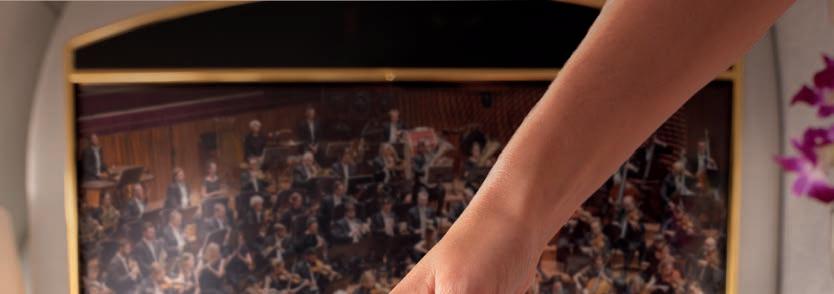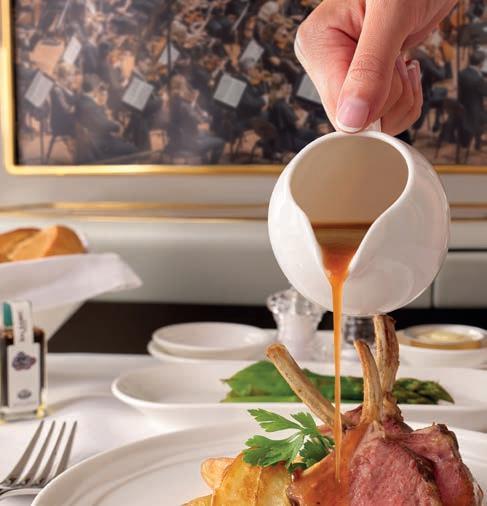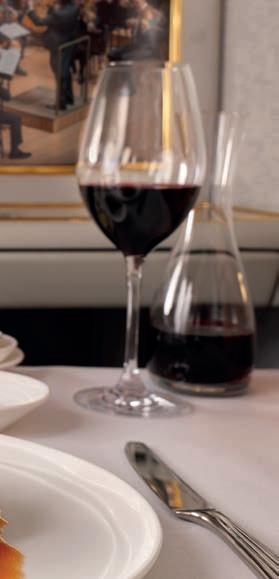Mahler’s Resurrection Symphony


27 February & 1 March 2025
Arts Centre Melbourne, Hamer Hall







27 February & 1 March 2025
Arts Centre Melbourne, Hamer Hall




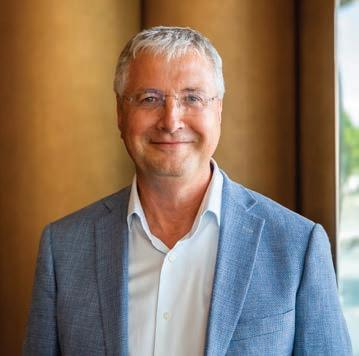
On behalf of all of us at the Melbourne Symphony Orchestra, welcome to the Ryman Healthcare Season Opening Gala.
Tonight, we will experience one of the marvels of symphonic music, under the baton of our dynamic Chief Conductor Jaime Martín. Mahler’s Symphony No.2 is an epic piece and an epic experience, combining the full force of our orchestra, chorus, and soloists.
On a personal note, I am delighted to welcome you to my first Season Opening Gala. Melbourne has truly opened its arms to my family and I, and we feel very much at home here.
We are extremely lucky to be a vital part of this culturally vibrant city. In return, the MSO always offers the wonder of incredible symphonic music played in the outer reaches of human achievement and inspiration. Music creates a special connection to audiences which can anchor us all, whether experienced together in the concert hall or in the places where people live. We plan to create a range of high-quality local performances within our neighbourhoods to provide more opportunities for people to experience the thrilling impact of the MSO.
Special thanks go to our long-standing Principal Partner, Emirates, and our Premier Partner, Ryman Healthcare, the presenting partner of tonight’s concert.
Thank you also to you, for your deep support. You are the bedrock of our orchestra, and we could not do what we do without you. Enjoy the Mahler—I know I will.
Richard Wigley Chief Executive Officer, MSO
“I’ve benefitted so much from the MSO. I love knowing that my support will enable others to benefit from MSO’s transformative music experiences.”
Jennifer Henry, MSO Guardian and Patron
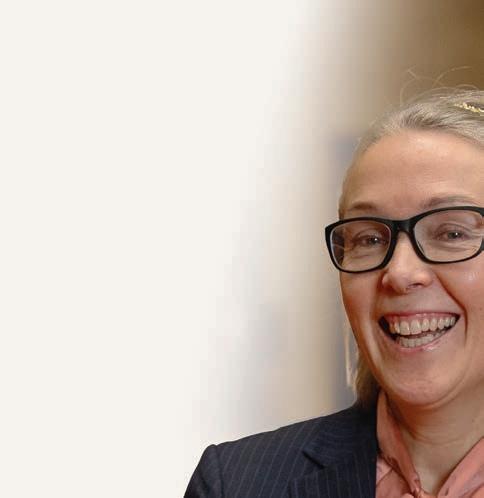



Leaving a gift in your Will to the MSO ensures your story—and the orchestra you love—lives on in perpetuity. We are honoured to play an important role in your musical journey and invite you to become our next Guardian of the MSO.


Scan the QR code to learn more or call (03) 8646 1551 to speak with a member of the MSO Philanthropy team.
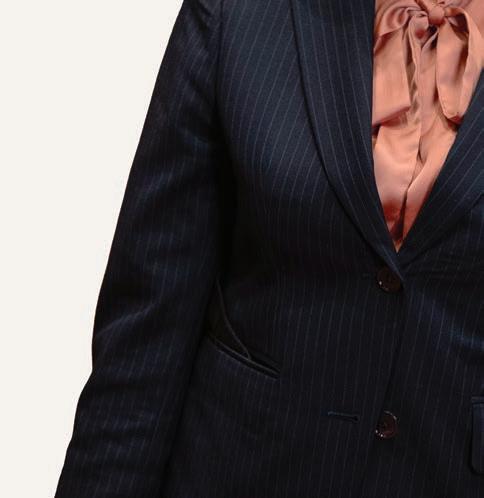



Melbourne Symphony Orchestra
Jaime Martín conductor
Eleanor Lyons soprano
Catriona Morison mezzo-soprano
MSO Chorus
Warren Trevelyan-Jones chorus director
Mahler Symphony No.2 in C minor Resurrection [85']
Running time: 1 hour and 30 minutes with no interval.
Timings listed are approximate.
This performance opens with our musical Acknowledgment of Country, Long Time Living Here by Deborah Cheetham Fraillon AO.
In consideration of your fellow patrons, the MSO thanks you for silencing and dimming the light on your phone.
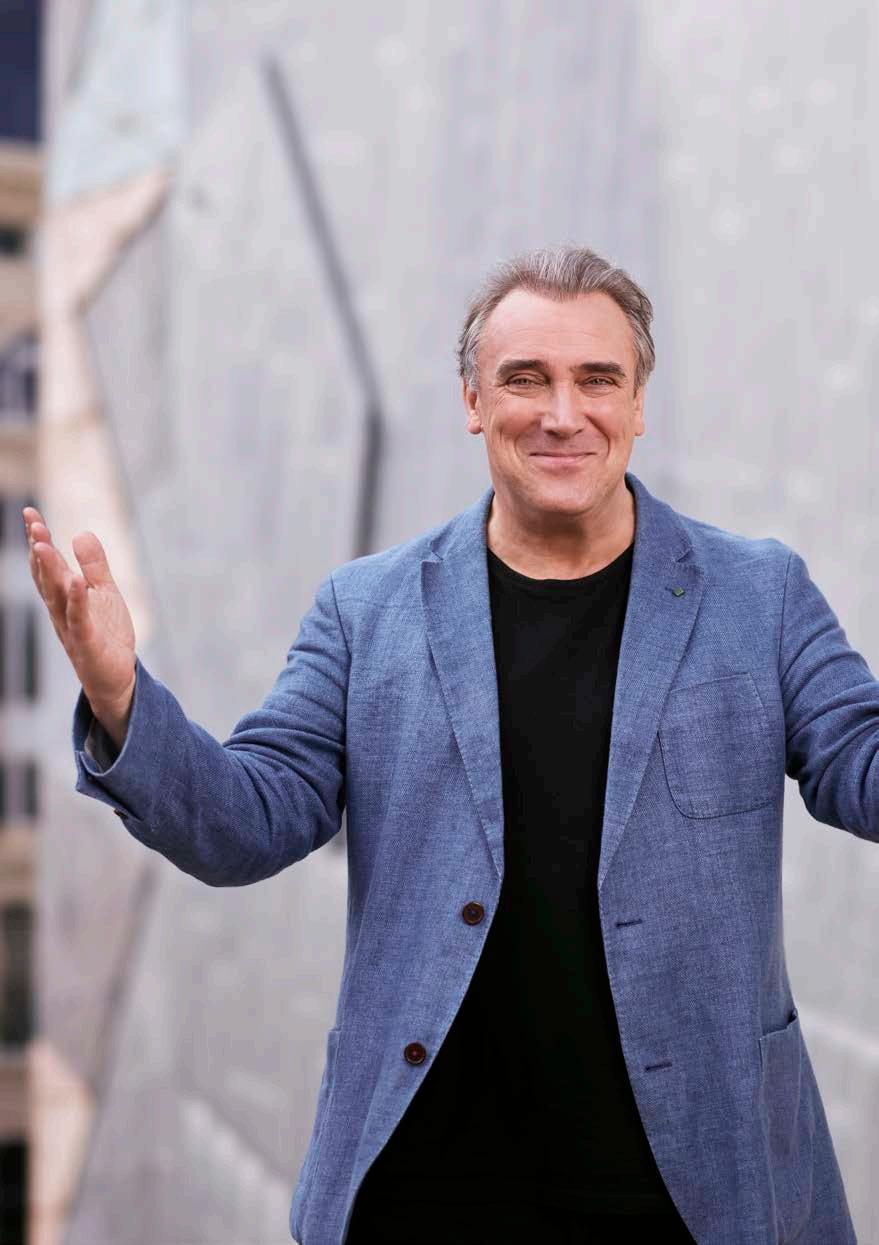
Brimming with enthusiasm, hugely talented, deeply passionate … meet MSO Chief Conductor Jaime Martín

Jaime Martín feels he got the measure of Melbourne when he had to see a dentist during his last visit.
“I’m sitting there with my mouth open,” recalls Martín, “and he says, ‘What are you doing here?’ I’m a conductor. ‘Well, now you’re registered here, tell me when you do concerts and maybe we can meet afterwards; I can show you some bars!’”
Martín beams. “How nice that is! To be in a place where people detect that you are new in town or have some connection with the city and are so friendly and open – and proud! That’s what I find in Melbourne!”
After a career playing flute, Jaime began working full-time as a conductor 12 years ago, and in February 2022, took up the position of Chief Conductor of the Melbourne Symphony Orchestra. Not that conducting was a new interest; when he was only 19, studying in The Hague in the Netherlands, there was the option of taking a course in conducting. But at the same time, he was chosen for the European Union Youth Orchestra—where he first met his wife Rachel Gough, who is now Principal Bassoon with the London Symphony Orchestra.
At the end of his studies, he moved to London and became Principal Flute at the Academy of St Martin in the Fields under the late Sir Neville Marriner, who often told him he should conduct.
When the transition came, he says with a grin, it was right at the time when men are supposed to have mid-life crises—in his early 40s. But this was anything but a crisis; it just crept up on him. He was asked if he would be interested in conducting a youth orchestra. “I thought, ‘Why not?’ I did it. And then, from that moment, it snowballed.”
Serving a city of five million people, he says, the Orchestra must cater to broad tastes. But there are some enticing rabbit holes he wants to explore, including reviving local composers who have been largely forgotten. He is thrilled about all of it. And judging by the huge banner of his face on the Arts Centre spire when he was first in Melbourne —he sent a picture of it to his mother—Melbourne is ready to be thrilled by him. On the way back from the dentist, he says, his taxi driver asked what he did. He told him, to which the taxi driver said he was an MSO subscriber; could he have a selfie? “I thought this is ridiculous!” Martín gives another of those huge laughs. “I don’t know, maybe it was my lucky day, but I was very impressed by that. For me, this is the feel of the city.”
Adapted from a January 2022 article in Encore: The Melbourne Symphony Orchestra magazine.

In the first project of its kind in Australia, the MSO has developed a musical Acknowledgment of Country with music composed by Yorta Yorta composer Deborah Cheetham Fraillon AO, featuring Indigenous languages from across Victoria.
Generously supported by Helen Macpherson Smith Trust and the Commonwealth Government through the Australian National Commission for UNESCO, the MSO is working in partnership with Short Black Opera and Indigenous language custodians who are generously sharing their cultural knowledge.
The Acknowledgement of Country allows us to pay our respects to the traditional owners of the land on which we perform in the language of that country and in the orchestral language of music.

As a Yorta Yorta/Yuin composer the responsibility I carry to assist the MSO in delivering a respectful acknowledgement of country is a privilege which I take very seriously. I have a duty of care to my ancestors and to the ancestors on whose land the MSO works and performs. As MSO continues to grow its knowledge and understanding of what it means to truly honour the First people of this land, the musical acknowledgment of country will serve to bring those on stage and those in the audience together in a moment of recognition as as we celebrate the longest continuing cultures in the world.
– Deborah Cheetham Fraillon AO


The Melbourne Symphony Orchestra is Australia’s preeminent orchestra, dedicated to creating meaningful experiences that transcend borders and connect communities. Through the shared language of music, the MSO delivers performances of the highest standard, enriching lives and inspiring audiences across the globe.
Woven into the cultural fabric of Victoria and with a history spanning more than a century, the MSO reaches five million people annually through performances, TV, radio, and online broadcasts, as well as critically acclaimed recordings from its newly established recording label.
In 2025, Jaime Martín continues to lead the Orchestra as Chief Conductor and Artistic Advisor. Maestro Martín leads an Artistic Family that includes Principal Conductor and Artistic Advisor—Learning and Engagement Benjamin Northey, Cybec Assistant Conductor Leonard Weiss, MSO Chorus Director Warren Trevelyan-Jones, Composer in Residence Liza Lim AM, Artist in Residence James Ehnes, First Nations Creative Chair Deborah Cheetham Fraillon AO, Cybec Young Composer in Residence Klearhos Murphy, Cybec First Nations Composer in Residence James Henry, Artist in Residence, Learning & Engagement Karen Kyriakou, Young Artist in Association Christian Li, and Artistic Ambassadors Tan Dun, Lu Siqing and Xian Zhang.
The Melbourne Symphony Orchestra respectfully acknowledges the people of the Eastern Kulin Nations, on whose un‑ceded lands we honour the continuation of the oldest music practice in the world.
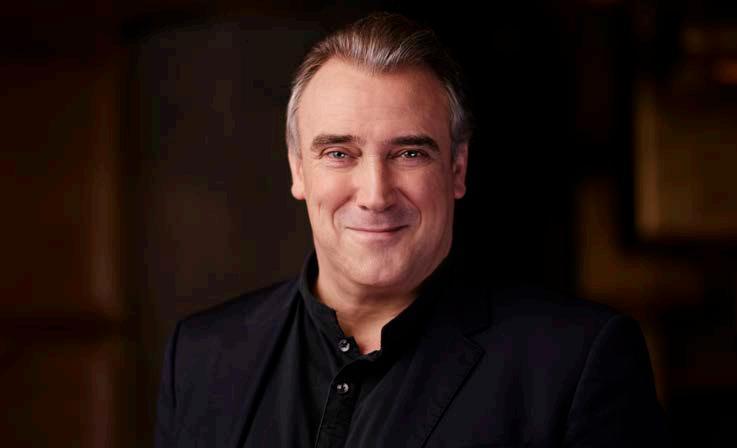
Chief Conductor of the Melbourne Symphony Orchestra since 2022, and Music Director of the Los Angeles Chamber Orchestra since 2019, with those roles currently extended until 2028 and 2027 respectively, Spanish conductor Jaime Martín also takes up the role of Principal Guest Conductor of the BBC National Orchestra of Wales from the 24/25 season, and has held past positions as Chief Conductor of the National Symphony Orchestra of Ireland (2019–2024), Principal Guest Conductor of the Orquesta y Coro Nacionales de España (Spanish National Orchestra) (2022–2024) and Artistic Director and Principal Conductor of Gävle Symphony Orchestra (2013–2022).
Having spent many years as a highly regarded flautist, Jaime turned to conducting full-time in 2013. Recent and future engagements include appearances with the London Symphony Orchestra, Dresden Philharmonic, Netherlands Philharmonic, Royal Stockholm Philharmonic, as well as a nine-city European tour with the London Philharmonic Orchestra.
Jaime Martín is a Fellow of the Royal College of Music in London, and in 2022 the jury of Spain’s Premios Nacionales de Música awarded him their annual prize for his contribution to classical music.
Jaime Martín’s Chief Conductor Chair is supported by the Besen Family Foundation in memory of Eva Besen AO and Marc Besen AC.
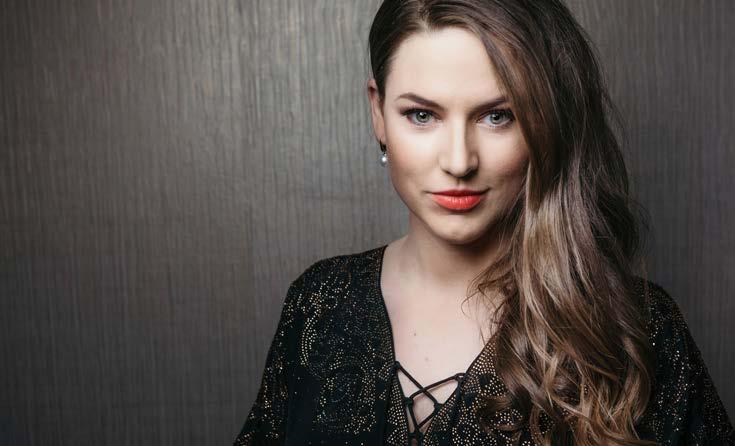
Australian soprano Eleanor Lyons is known for her versatility, deep musicality and fresh interpretations. An international success, Eleanor has garnered global attention for her beautiful voice and virtuosic performances. Also known for her versatility, Eleanor passionately shapes every detail of opera, orchestral concerts, chamber music and solo recitals. Her talent and approach have resulted in on-going fruitful collaborations with various orchestras and conductors on a global level.
Most recent highlights include Eleanor’s phenomenally successful house debut at Dresden’s Semperoper as Leonore in Beethoven’s Fidelio in the historical production by Christine Milietz from 1989. She took the same role to the stage with the Orquesta y Coro Nacionales de España in Madrid under the direction of David Afkham.
Here in Australia Eleanor returned to the Queensland Symphony in two consecutive engagements under the baton of Umberto Clerici first in Strauss’ Four Last Songs followed by Beethoven’s 9th Symphony. Other Australian highlights included her debut with the Sydney Symphony as Freia in a stage production of Wagner’s Das Rheingold with Simone Young.
Eleanor Lyons looks forward to making her debut with the Melbourne Symphony Orchestra as soloist in Mahler’s Symphony No.2.
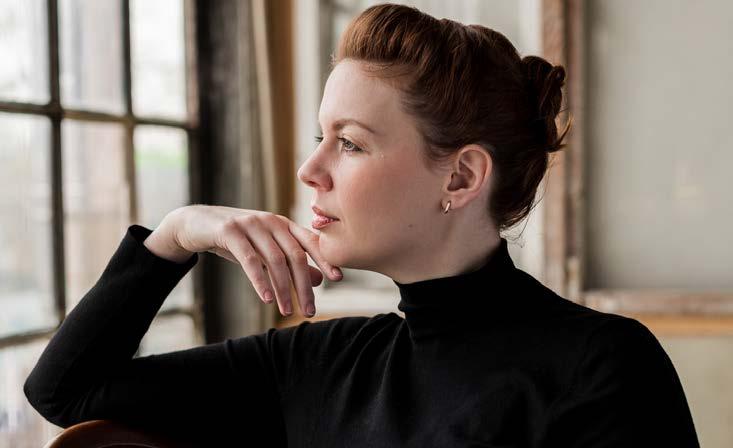
Scottish mezzo-soprano Catriona Morison has a dynamic 2024/25 season, showcasing her versatility across opera and concert stages. Operatic highlights include Mary in Wagner’s The Flying Dutchman with the Orchestre Philharmonique du Luxembourg under Tarmo Peltokoski and Octavian in Strauss’ Der Rosenkavalier in concert with the Tokyo Symphony Orchestra under Jonathan Nott. Her concert schedule spans prestigious venues worldwide. She will perform Berlioz’s Roméo et Juliette with the Hamburg Symphony Orchestra under Sylvain Cambreling, Bach’s Mass in B minor in Rome and Prague with Semyon Bychkov, and Handel’s Messiah with the Hong Kong Philharmonic under Ralf Otto. Mahler’s Symphony No.2 features prominently, with performances in Melbourne, Sapporo, and Dallas under conductors Jaime Martín, Elias Grandy, and Fabio Luisi.
A dedicated recitalist, Morison regularly appears at Wigmore Hall, the Vienna Konzerthaus, and leading festivals, continuing to champion art song through her recordings and performances.
Celebrating 60 years of creating inspiring musical moments, the Melbourne Symphony Orchestra Chorus gives voice to the Orchestra’s choral repertoire. The MSO Chorus has performed with the finest conductors including Jaime Martín, Sir Andrew Davis, Edward Gardner, Mark Wigglesworth, Bernard Labadie, Vladimir Ashkenazy, Xian Zhang, Nodoko Okisawa and Simon Halsey.
Committed to developing and performing new Australian and international choral repertoire, MSO Chorus commissions include Brett Dean’s Katz und Spatz, Ross Edwards’ Mountain Chant, and Paul Stanhope’s Exile Lamentations. Recordings by the MSO Chorus have received critical acclaim. It has performed across Brazil and at the Cultura Inglese Festival in Sao Paolo, with The Australian Ballet, Singapore Symphony Orchestra, at the AFL Grand Final and at Anzac Day commemorative ceremonies.
The MSO Chorus is always welcoming new members. If you would like to audition, please visit mso.com.au/chorus for more information.
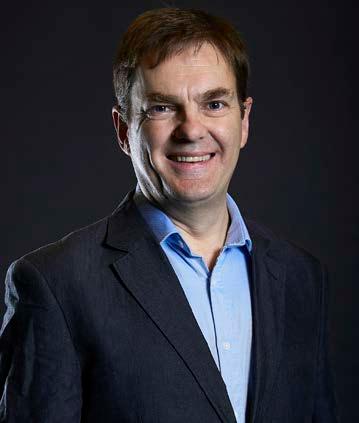
Warren Trevelyan-Jones is regarded as one of the leading choral conductors and choir trainers in Australia. As Head of Music at St James’, King Street, Sydney, a position he held until recently since relocating to Australia in 2008, The Choir of St James’ gained a highprofile international reputation through its regular choral services, orchestral masses, concert series and a regular program of recording and both interstate and international touring.
Warren has had an extensive singing career as a soloist and ensemble singer in Europe, including nine years in the Choir of Westminster Abbey and regular work with the Gabrieli Consort, Collegium Vocale (Ghent), the Taverner Consort, The Kings Consort, Dunedin Consort, The Sixteen and the Tallis Scholars.
He is also a co-founder of The Consort of Melbourne and, in 2001 with Dr Michael Noone, founded the ‘Gramophone’ award-winning group Ensemble Plus Ultra.
In September 2017 he was appointed Chorus Director of the Melbourne Symphony Orchestra and was appointed Chorus Master of the Tasmanian Symphony Orchestra in March this year. He is also an experienced singing teacher and qualified music therapist.
Gustav Mahler (1860–1911)
Symphony No. 2 in C minor Resurrection
I. Allegro maestoso
II. Andante moderato
III. Scherzo: calmly flowing –
IV. Urlicht (Primordial light): Very solemn –
V. Finale: in the tempo of the Scherzo – Slowly – Allegro energico – Slowly
Eleanor Lyons soprano
Catriona Morison mezzo-soprano
MSO Chorus
Mahler’s deepest feelings about life and death, his anger at the disparity between the possible and the actual, his love of German folk culture, his memories of the music from his early childhood, his belief in music as a vehicle for the banal as well as the divine, are major concerns in all his pieces. His symphonies are at once epic and intimate, exultant and despairing, the revelations of a great humanist and a great doubter.
His major works often act as commentaries on one another. Music from The Songs of a Wayfarer (1884) is used extensively in the First Symphony (1888), and it is the hero of the first symphony who, in Mahler’s words, is “born to his grave, his life being reflected, as in a clear mirror, from a vantage point” in the first movement of the second (1887–94).
Following the Resurrection symphony, his Third (1893–6) also deals with themes of negation and regeneration, this time observed through the world of nature.
One of the other forces that binds these works together is Mahler’s use of material drawn from the early 19th century collection of German folk songs and poetry, Des Knaben Wunderhorn (The
Youth’s Magic Horn). Mahler first read the Wunderhorn collection in his late 20s, and wrote orchestral songs based on these texts in parallel with his composition of the first four symphonies. The Resurrection demonstrates the ways in which the Wunderhorn music find its way into the early symphonies—as alreadycomposed songs shorn of their texts (as in the scherzo) and as new settings written for the occasion (Urlicht).
The Wunderhorn texts were a crucial spur to Mahler’s creativity; often naive and simple, they acquired unexpected resonances under Mahler’s gaze. He brought to them his life’s experience and his attendant sensitivity to irony in a way we would now describe as “modern.”
“My new work is to the one you know [his first symphony] as a man to an infant,” Mahler wrote to Richard Strauss after he had completed the finale of his second symphony. To another correspondent he declared: “It is the most important thing that I have done.” It had been a troubled and piecemeal process of composition, taking him seven years, and had grown from a single 22-minute movement to a work 85 minutes long, requiring a very large orchestra, as well as a choir and vocal soloists.
Mahler began work on the first movement in 1887, when he was second conductor at the Leipzig Opera. At this stage it was called Totenfeier (Rites for the Dead), and by September 1888 he had completed this first version of it. He would play it through to friends, but was not sure what kind of second movement could follow it. He would not find a solution to this problem until 1893, and at one point decided that the work might stand alone as a singlemovement tone poem.
The next major event in the life of this symphony took place in Hamburg where, in 1891, Mahler became Chief Conductor of the Opera. His endeavours there earned the approval of Hans von Bülow, the great pianist and conductor who had given the first performances of Wagner’s Tristan and Isolde and The Mastersingers of Nuremberg. Mahler, anxious to have von Bülow conduct Totenfeier, played it to him on the piano, but at the end of the recital the older man blocked his ears, saying: “Compared with this, Tristan is like a Haydn symphony!”
This incident in effect froze Mahler’s work on the piece completely, and he could not find a way forward until von Bülow’s death three years later. He knew he wanted to use voices in the finale, but was daunted by the model of Beethoven’s Ninth, and feared accusations of imitation. Then, at von Bülow’s funeral service the choir performed a setting of Klopstock’s Resurrection Ode, and at once Mahler recognised the verses that would form the resolution of his Totenfeier. As he later described this experience:
My mood as I sat there thinking of the man who had died was wholly in tune with the work that was growing in my mind. ...Klopstock’s chorale Auferstehn was like a flash of lightning...the flash that all creative artists wait for—the whole work now stood clearly before me.
Almost immediately he completed his revisions to the first movement and began work on the finale. The bulk of his work on the last movement took place in June 1894, in a new summerhouse (really a composing cottage) he had built for himself in Steinbach on the Attersee, near Salzburg. As he wrote he also came to a decision about the symphony’s inner sections, deciding on a series of interludes that would provide contrast with the big outer movements. He had already written his setting of Urlicht, probably in 1892, and in the summer of 1893 he elaborated and
re-orchestrated another Wunderhorn song, St. Anthony of Padua’s Sermon to the Fishes, with a view to including it in the symphony. The second movement, the Andante moderato, was also completed at this time. By December 1894 Mahler had completed the symphony, and had placed the movements in their current order.
Klopstock’s poem had given Mahler the dramatic structure he needed to complete the symphony. He conducted the first three movements in Berlin in March 1895, to a generally hostile critical reception. On the other hand the first complete performance, also in Berlin, in December of that year, was Mahler’s first real public success as a composer.
In 1896, at the request of the young music critic and composer Max Marschalk, Mahler set down the ideas behind the symphony. He expanded this description five years later for a Dresden performance.
In the composer’s words, then, the first movement asks the question: “What is life—and what is death? Why did you live? Why did you suffer? Is it nothing but a huge, frightful joke? We must answer these questions in some way, if we want to go on living.”
These questions are posed within a large sonata-form structure in C minor, and the symphony opens searingly with cellos and basses stating the main funeral march theme—we are already on the edge of the abyss, and will return there repeatedly. But there is great variety of texture and tempo; the second subject, on the violins, brings compassion, and there is much pastoral music introduced by the woodwind instruments. In the development section Mahler introduces several new themes, including a mournful tune first played by cor anglais and bass clarinet. The plainchant Dies Irae is transformed into a shining chorale—culminating in E flat, the ultimate key of the finale—which is
obliterated by the funeral march. With a series of shattering chords on the brass, almost threatening complete disintegration, we are led into the recapitulation, and the movement closes with a huge chromatic scale played by most of the orchestra, suggesting a mood of bitter despair.
The rest of the symphony is Mahler’s attempt to answer the question: why did you live? His responses are contrasted with one another as dramatically as possible, each movement reacting to rather than flowing from its predecessor. In this way the work resembles a series of panels rather than a single great canvas, and this was undoubtedly Mahler’s intention, not simply a symptom of the work’s chequered compositional history.
After the anguished conclusion of the opening movement the andante recalls moments of life’s joy in a stream of melody set to the gentle rhythm of the ländler, an Austrian country dance with which Mahler would have been familiar since childhood. As he described it, this movement depicts “the image of a longdead hour of happiness, which now enters your soul like a sunbeam that nothing can obscure.” But it is obscured during the trio section, by the cellos, basses and trombones, after which the return of the principal ländler theme restores the mood of peace and tranquillity.
Violent timpani strokes open the scherzo, as Mahler’s hero awakens from this wistful dream and “returns into the confusion of life, beholds the tumult of appearances
O Röschen rot!
Der Mensch liegt in grösster Not!
Der Mensch liegt in grösster Pein!
Je lieber möcht’ ich im Himmel sein!
Da kam ich auf einen breiten Weg;
and...despairs of himself and God. The world and life become for him a disorderly apparition; disgust for all being and becoming lays hold of him with an iron grip and drives him to cry out in desperation.” Mahler’s song about St. Anthony’s futile sermon to the fishes becomes a dance of life, adopting many different faces— cynicism, false cheer, fright—and interrupted on its way by woodwind interjections. There is joy and beauty in the two trio sections—the first an exuberant country dance, the second a sentimental close-harmony tune for the trumpets—but the mood of futility and emptiness again becomes all-pervasive, culminating in a terrible “cry of disgust” which is dispelled by a return to the “dance of life” music, now descending through the orchestra until the final stroke on the tam-tam.
Mahler wrote of his response to the St. Anthony story: “...look at the congregation swimming away as soon as the sermon is over. ...Not one of them is the wiser for it, even though the Saint has performed for them. But only a few people will understand my satire on mankind.”
There is no break between the third and fourth movements. After the hollow sounds of the scherzo have died away the mezzo-soprano begins the song Urlicht. In the words of the music writer Philip Barford, the entry of the voice here “serves as a pivotal point, transfiguring the symphonic scheme with light and depth.”
Little red rose!
Humankind lies in greatest need! Humankind lies in greatest pain! How I wish I were in heaven!
Then I came upon a broad path;
Da kam ein Engelein und wollt’ mich abweisen.
Ach nein! Ich liess mich nicht abweisen: Ich bin von Gott und will wieder zu Gott!
Der liebe Gott wird mir ein Lichtchen geben,
Wird leuchten mir bis in das ewig selig Leben!
Without pause we hear the “cry of disgust” once again, ushering in the longest and most complex movement of all. “We are confronted once more with terrifying questions,” the composer wrote of this moment. “The last judgement is at hand, and the horror of the day of days has come upon us.” This gives way to a passage of great peace, confidence and spaciousness, in preparation for the call to resurrection. We are now launched firmly into the episodic development section, where themes from previous movements (except the second, tellingly) are recalled, and, from the later choral sections of the current movement, anticipated. The Dies Irae is heard again, then a clear, confident theme appears for the first time, on trombone, and is transformed into a series of rapturous slow fanfares.
After a tremendous crescendo for percussion alone, a great march of the dead now begins. “The earth trembles, graves burst open, the dead arise and step forth in long endless files,” Mahler wrote. “The cry for mercy and grace falls terrifyingly on our ear.” This march rises to a fearful climax, only to be succeeded by another march, first heard off-stage, that climaxes with a “cry of disgust” even more ferocious than the one which opened this movement.
an angel appeared and wanted to turn me away.
Ah no! I did not let myself be turned away. I came from God and would return to God! Dear God will give me a little light, will light my way to the eternal, blessed life!
A solo horn now plays the melody later sung by the mezzo-soprano as “O believe, my heart believe,” but is soon overwhelmed by off-stage horns announcing the call to resurrection, answered by two groups of off-stage trumpets. We seem to be between heaven and earth, as the call to the afterlife is mingled with a nightingale’s call on the flute, “like a last quivering echo of earthly life.”
Then, in hushed tones, the choir sings the first verses of Klopstock’s ode, with the soprano soloist joining them to create an effect of breathtaking beauty. New stanzas Mahler wrote himself, to answer explicitly the first movement’s questions, are given to the two vocal soloists. The music gradually builds in confidence and moves through different keys and textures towards E flat, in which key the Resurrection chorale shines forth, crowning one of the most remarkable of all symphonic creations. Mahler’s description of the score’s final pages is the only possible one: “An overwhelming love lightens our being. We know and are.”
Chorus and Soprano
Aufersteh’n, ja aufersteh’n wirst du, Mein Staub, nach kurzer Ruh’!
Unsterblich Leben! Unsterblich Leben
Wird der dich rief dir geben.
Wie der aufzublüh’n wirst du gesä’t!
Der Herr der Ernte geht
Und sammelt Garben uns ein, die starben!
Mezzo-soprano
O glaube, mein Herz, o glaube:
Es geht dir nichts verloren!
Dein ist, Dein, ja Dein, was du gesehnt!
Dein, was du geliebt,
Was du gestritten!
Soprano
O glaube:
Du wardst nicht umsonst geboren!
Hast nicht umsonst gelebt, gelitten!
Chorus
Was entstanden ist, das muss vergehen!
Was vergangen, auferstehen!
Hör’ auf zu beben!
Bereite dich zu leben!
Soprano, Mezzo-soprano and Chorus
O Schmerz! Du Alldurchdringer!
Dir bin ich entrungen!
O Tod! Du Allbezwinger!
Nun bist du bezwungen!
Mit Flügeln, die ich mir errungen, In heissem Liebesstreben
Werd’ ich entschweben
Zum Licht, zu dem kein Aug’ gedrungen!
Mit Flügeln, die ich mir errungen
Werde ich entschweben!
Sterben werd’ ich, um zu leben!
Aufersteh’n, ja aufersteh’n wirst du,
Mein Herz, in einem Nu!
Was du geschlagen,
Zu Gott wird es dich tragen!
Chorus and Soprano
You will rise again, rise again, My mortal dust, after a brief rest. Immortal life! the one who called you will give you immortal life. You are sown to flower.
The lord of the harvest goes forth And gathers us in sheaves, we who have died.
Mezzo-soprano
Believe, O my heart, believe: you have lost nothing. All that you longed for is yours, yes, yours: all you loved, all you fought for is yours.
Soprano
O believe:
You were not born in vain! You did not live or suffer in vain.
Chorus
All that is created must die. All that has died must rise again! Cease your trembling! Prepare to live!
Soprano, Mezzo-soprano and Chorus
O Pain that pierced me through, I have torn free of you!
O Death, the conqueror of all, now you are defeated!
On the wings I won in the fierce striving for love I will soar to the light that no eye has seen!
On the wings I won I will soar!
I will die so I may live!
You will rise again, yes, rise again, my heart, in an instant! The blows you have struck will carry you to God!
© Phillip Sametz 1995/2005
Translations: Symphony Australia © 2003



First Violins
Tair Khisambeev
Acting Associate Concertmaster
Di Jameson OAM and Frank Mercurio #
Anne-Marie Johnson
Acting Assistant Concertmaster
David Horowicz#
Peter Edwards
Assistant Principal
Sarah Curro
Dr Harry Imber#
Deborah Goodall
Lorraine Hook
Kirstin Kenny
Mark Mogilevski
Michelle Ruffolo
Anna Skálová
Oksana Thompson*
Emily Beauchamp*
Jo Beaumont*
Clare Carrick*
Michael Loftus-Hills*
Marie-Louise Slaytor*
Second Violins
Matthew Tomkins
Principal
The Gross Foundation#
Jos Jonker
Associate Principal
Monica Curro
Assistant Principal
Dr Mary Jane Gething AO#
Mary Allison
Isin Cakmakçioglu
Freya Franzen
Andrew Hall
Robert Macindoe
Philippa West
Andrew Dudgeon AM#
Patrick Wong
Cecilie Hall#
Roger Young
Shane Buggle and Rosie Callanan#
Jacqueline Edwards*
Cameron Jamieson*
Andrea Keeble*
Violas
Christopher Moore
Principal
Di Jameson OAM and Frank Mercurio #
Lauren Brigden
Katharine Brockman
Aidan Filshie
Gabrielle Halloran
Jenny Khafagi
Margaret Billson and the late Ted Billson#
Fiona Sargeant
Karen Columbine*
Ceridwen Davies*
Michael Grolid*
Sandra Ionescu*
Isabel Morse*
Cellos
David Berlin
Principal
Rachael Tobin
Associate Principal
Rebecca Proietto
Peter T Kempen AM#
Angela Sargeant
Caleb Wong
Michelle Wood
Joshua Jones^
Jonathan Chim*
Anna Pokorny*
Daniel Smith*
Double Basses
Jonathon Coco Principal
Stephen Newton
Acting Associate Principal
Benjamin Hanlon
Acting Assistant Principal
Caitlin Bass
Rohan Dasika
Emma Sullivan*
Luca Arcaro*
Hamish Gullick*
Flutes
Prudence Davis
Principal
Jean Hadges #
Wendy Clarke
Associate Principal
Sarah Beggs
Piccolo
Andrew Macleod
Principal
Oboes
Johannes Grosso
Principal
Michael Pisani
Acting Principal
Ann Blackburn
Margaret Billson and the late Ted Billson#
Rachel Curkpatrick*
Clarinets
David Thomas
Principal
Philip Arkinstall
Associate Principal
Craig Hill
Rosemary and the late Douglas Meagher#
Lily Tamir-Regev*
Bass Clarinet
Jonathan Craven
Principal
Bassoons
Jack Schiller
Principal
Dr Harry Imber#
Elise Millman
Associate Principal
Contrabassoon
Brock Imison
Principal
Tasman Compton*
Horns
Nicolas Fleury
Principal
Margaret Jackson AC #
Saul Lewis
Principal Third
The late Hon Michael Watt KC and Cecilie Hall#
Abbey Edlin
The Hanlon Foundation#
Josiah Kop
Rachel Shaw
Professor Gary McPherson#
Natalia Edwards*
Peter Luff*
Rebecca Luton*
Robert McMillan*
Rosie Yang*
Julian Zheng*
Trumpets
Owen Morris
Principal
Shane Hooton
Associate Principal
Glenn Sedgwick#
Rosie Turner
Dr John and Diana Frew#
Joel Walmsley^
Nic Corkeron*
Callum G’Froerer*
Brent Grapes*
Tim Keenihan*
Yoram Levy*
Darcy O’Malley*
Learn more about our musicians on the MSO website. # Position supported by * Guest Musician
^ MSO Academy
Trombone
José Milton Vieira
Principal
Richard Shirley
Bass Trombone
Michael Szabo
Principal
Ben Lovell-Greene
Guest Associate Principal
Tuba
Timothy Buzbee
Principal
Timpani
Matthew Thomas Principal
Brent Miller*
John Arcaro
Tim and Lyn Edward#
Percussion
Shaun Trubiano
Principal
Robert Cossom
Drs Rhyl Wade and Clem Gruen#
Brent Miller*
Tracey Patten*
Allan Watson*
Scott Weatherson*
Harp
Yinuo Mu
Principal
Pauline and David Lawton#
Delyth Stafford*
KEYBOARD
Donald Nicolson*
Soprano
Philippa Allen
Sheila Baker
Helena Balazs
Eva Butcher
Aliz Cole
Gabrielle Connell
Samantha Davies
Michele de Courcy
Anna Dvorakova
Keren Evans
Laura Fahey
Catherine Folley
Carolyn Francis
Nicole Free
Karina Gough
Juliana Hassett
Kim Sue Hendry
Penny Huggett
Gina Humphries
Tania Jacobs
Gwen Kennelly
Natasha Lambie
Charlene Li
Judy Longbottom
Caitlin Noble
Susie Novella
Karin Otto
Amanda Powell
Tanja Redl
Beth Richardson
Danielle Rosenfeld-Lovell
Jillian Samuels
Kathryn Scully
Julienne Seal
Fiona Seers
Jemima Sim
Fiona Steffensen
Ellie Sykes
Tracey Thorpe
Elizabeth Tindall
Tracy Videon
Ariane Vrisakis
Agnes Widjaja
Veryan Croggon
Alto
Ruth Anderson
Catherine Bickell
Cecilia Björkegren
Alexandra Chubaty
Andrea Clifford-Jones
Marie Connett
Mari Eleanor
Nicola Eveleigh
Jill Giese
Debbie Griffiths
Ros Harbison
Jennifer Henry
Kristine Hensel
Helen Hill
Yvonne Ho
Helen MacLean
Rosemary McKelvie
Charlotte Midson
Penelope Monger
Natasha Pracejus
Alison Ralph
Kerry Roulston
Carol Silberberg
Jill Thomas
Jenny Vallins
Jacqueline Cheng
Sophia Gyger
Julie Lotherington
Tenor
James Allen
Kent Borchard
Steve Burnett
Peter Campbell
Allan Chiang
Peter Clay
James Dal-Ben
Carlos Del Cueto
James Dipnall
Simon Goldman
Lyndon Horsburgh
Fergus Inder
Lilijana Maticevska
Michael Mobach
Jean-Francois Ravat
Linton Roe
Colin Schultz
Robert Simpson
Brad Warburton
Stewart Webb
Stephen Wood
Bass
Maurice Amor
José Miguel Armijo Fidalgo
Ryder Babcock
Kevin Barrell
Stephen Bordignon
Roger Dargaville
Peter Deane
Simon Evans
James Fletcher
Elliott Gyger
Andrew Ham
Jordan Janssen
Gary Levy
Tim March
Douglas McQueen-Thomson
Douglas Proctor
Stephen Pyk
Nick Sharman
Matthew Toulmin
Caleb Triscari
Simon Wu
Raoul Zambelli
Maciek Zielinski
In Recital
25 June 7.30pm
Ryman Healthcare Winter Gala with the Melbourne Symphony Orchestra conducted by Jaime Martín
28 June 7.30pm
Arts Centre Melbourne, Hamer Hall

Book Now mso.com.au/langlang
MSO Patron
Her Excellency Professor, the Honourable
Margaret Gardner AC, Governor of Victoria
Chairman’s Circle
The Gandel Foundation
The Gross Foundation
Besen Family Foundation
Di Jameson OAM and Frank Mercurio
Harold Mitchell Foundation
Lady Primrose Potter AC CMRI
Cybec Foundation
The Pratt Foundation
The Ullmer Family Foundation
Anonymous (1)
Artist chair benefactors
Chief Conductor Chair Jaime Martín
Supported in memory of Eva Besen AO and Marc Besen AC
Concertmaster Chair
Dr David Li AM and Angela Li
Cybec Assistant Conductor Chair
Leonard Weiss CF
Cybec Foundation
Acting Associate Concertmaster
Tair Khisambeev
Di Jameson OAM and Frank Mercurio
Cybec Young Composer in Residence
Naomi Dodd
Cybec Foundation
Program Benefactors
Now & Forever Fund: International Engagement Gandel Foundation
Cybec 21st Century Australian Composers
Program Cybec Foundation
East meets West The Li Family Trust
Community and Public Programs
Australian Government Department of Social Services, AWM Electrical, City of Melbourne
Student Subsidy Program Anonymous
MSO Academy Di Jameson OAM and Frank Mercurio, Mary Armour
Jams in Schools Melbourne Airport, Department of Education, Victoria - through the Strategic Partnerships Program, AWM
Electrical, Jean Hadges, Hume City Council, Marian and EH Flack Trust
MSO Regional Touring AWM Electrical, Freemasons Foundation Victoria, Robert Salzer Foundation, Sir Andrew and Lady Fairley Foundation, Rural City of Wangaratta
Sidney Myer Free Concerts Sidney Myer
MSO Trust Fund and the University of Melbourne, City of Melbourne Event Partnerships Program
Instrument Fund Tim and Lyn Edward, Catherine and Fred Gerardson, Pauline and David Lawton, Joe White Bequest
Platinum Patrons $100,000+
AWM Electrical
Besen Family Foundation
The Gross Foundation
Di Jameson OAM and Frank Mercurio
David Li AM and Angela Li
Lady Primrose Potter AC Anonymous (1)
Virtuoso Patrons $50,000+
Jolene S Coultas
Tim and Lyn Edward
Dr Harry Imber
Margaret Jackson AC Anonymous (1)
Impresario Patrons $20,000+
Christine and Mark Armour
H Bentley
Shane Buggle and Rosie Callanan
Catherine and Fred Gerardson
The Hogan Family Foundation
Pauline and David Lawton
Maestro Jaime Martín
Elizabeth Proust AO and Brian Lawrence
Sage Foundation
Lady Marigold Southey
The Sun Foundation
Gai and David Taylor
Maestro Patrons $10,000+
John and Lorraine Bates
Margaret Billson and the late Ted Billson
Jannie Brown
Krystyna Campbell-Pretty AM
The late Ken Ong Chong OAM
Miss Ann Darby in memory of Leslie J. Darby
Anthony and Marina Darling
Mary Davidson and the late Frederick Davidson AM
Andrew Dudgeon AM
Val Dyke
Jaan Enden
Kim and Robert Gearon
Dr Mary-Jane H Gething AO
The Glenholme Foundation
Charles & Cornelia Goode Foundation
Cecilie Hall and the late Hon Michael Watt KC
Hanlon Foundation
David Horowicz
Peter T Kempen AM
Peter Lovell
Dr Ian Manning
Rosemary and the late Douglas Meagher
Ian and Jeannie Paterson
Hieu Pham and Graeme Campbell
Janet Matton AM & Robin Rowe
Liliane Rusek and Alexander Ushakoff
Quin and Lina Scalzo
Glenn Sedgwick
Athalie Williams and Tim Danielson
Lyn Williams AC
Anonymous (1)
Principal Patrons $5,000+
The Aranday Foundation
Mary Armour
Phillip Bacon AO
Alexandra Baker
Barbara Bell in memory of Elsa Bell
Julia and Jim Breen
Nigel and Sheena Broughton
Janet Chauvel and the late Dr Richard Chauvel
John Coppock OAM and Lyn Coppock
Cuming Bequest
David and Kathy Danziger
Carol des Cognets
Equity Trustees
Bill Fleming
John and Diana Frew
Carrillo Gantner AC and Ziyin Gantner
Geelong Friends of the MSO
The Glavas Family
Dr Rhyl Wade and Dr Clem Gruen
Louis J Hamon OAM
Dr Keith Higgins and Dr Jane Joshi
Geoff and Denise Illing
Dr Alastair Jackson AM
John Jones
Konfir Kabo
Merv Keehn and Sue Harlow
Suzanne Kirkham
Liza Lim AM
Lucas Family Foundation
Morris and Helen Margolis
Dr Isabel McLean
Gary and Ros McPherson
The Mercer Family Foundation
Myer Family Foundation
Suzie and Edgar Myer
Anne Neil in memory of Murray A. Neil
Newton Family in memory of Rae Rothfield
Sophie Oh
Jan and Keith Richards
Dr Rosemary Ayton and Professor Sam Ricketson AM
Guy Ross
Kate and Stephen Shelmerdine Foundation
Helen Silver AO and Harrison Young
Brian Snape AM
Dr Michael Soon
P & E Turner
The Upotipotpon Foundation
Mary Waldron
Janet Whiting AM and Phil Lukies
The Yulgilbar Foundation
Peter Yunghanns
Igor Zambelli
Anonymous (3)
Associate Patrons $2,500+
Barry and Margaret Amond
Marlyn Bancroft and Peter Bancroft OAM
Janet H Bell
Allen and Kathryn Bloom
Alan and Dr Jennifer Breschkin
Drs John D L Brookes and Lucy V Hanlon
Stuart Brown
Lynne Burgess
Dr Lynda Campbell
Oliver Carton
Leo de Lange
Sandra Dent
Rodney Dux
Diane and Stephen Fisher
Steele and Belinda Foster
Barry Fradkin OAM and Dr Pam Fradkin
Anthony Garvey and Estelle O’Callaghan
Susan and Gary Hearst
Janette Gill
R Goldberg and Family
Goldschlager Family Charitable Foundation
Colin Golvan AM KC and Dr Deborah Golvan
Jennifer Gorog
Miss Catherine Gray
Marshall Grosby and Margie Bromilow
Mr Ian Kennedy AM & Dr Sandra Hacker AO
Amy and Paul Jasper
Sandy Jenkins
Sue Johnston
Melissa Tonkin & George Kokkinos
Dr Jenny Lewis
David R Lloyd
Margaret and John Mason OAM
Ian McDonald
Dr Paul Nisselle AM
Simon O’Brien
Roger Parker and Ruth Parker
Alan and Dorothy Pattison
Ruth and Ralph Renard
James Ring
Tom and Elizabeth Romanowski
Dr Ronald and Elizabeth Rosanove
Christopher Menz and Peter Rose
Marshall Segan in memory of Berek Segan
OBE AM and Marysia Segan
Steinicke Family
Jenny Tatchell
Christina Turner
Bob Weis
Shirley and Jeffrey Zajac
Anonymous (5)
Player Patrons ($1,000+)
Dr Sally Adams
Jessica Agoston Cleary
Helena Anderson
Margaret Astbury
Geoffrey and Vivienne Baker
Mr Robin Batterham
Richard Bolitho
Joyce Bown
Elizabeth Brown
Suzie Brown OAM and the late Harvey Brown
Roger and Coll Buckle
Jill and Christopher Buckley
Dr Robin Burns and Dr Roger Douglas
Shayna Burns
Ronald and Kate Burnstein
Daniel Bushaway and Tess Hamilton
Peter A Caldwell
Alexandra Champion De Crespigny
John Chapman and Elisabeth Murphy
Joshua Chye
Kaye Cleary
Mrs Nola Daley
Panch Das and Laurel Young-Das
Caroline Davies
Michael Davies and Drina Staples
Rick and Sue Deering
John and Anne Duncan
Jane Edmanson OAM
Christopher R Fraser
Applebay Pty Ltd
David I Gibbs AM and Susie O’Neill
Sonia Gilderdale
Dr Celia Godfrey
Dr Marged Goode
Hilary Hall in memory of Wilma Collie
David Hardy
Tilda and the late Brian Haughney
Cathy Henry
Gwenda Henry
Anthony and Karen Ho
Rod Home
Lorraine Hook
Doug Hooley
Katherine Horwood
Penelope Hughes
Shyama Jayaswal
Basil and Rita Jenkins
Jane Jenkins
Wendy Johnson
Angela Kayser
Drs Bruce and Natalie Kellett
Dr Anne Kennedy
Akira Kikkawa
Dr Richard Knafelc and Mr Grevis Beard
Tim Knaggs
Dr Jerry Koliha and Marlene Krelle
Jane Kunstler
Ann Lahore
Wilson and Anita Lai
Kerry Landman
Janet and Ross Lapworth
Bryan Lawrence
Phil Lewis
Andrew Lockwood
Elizabeth H Loftus
David Loggia
Chris and Anna Long
Wayne McDonald and Kay Schroer
Lisa and Brad Matthews
Lesley McMullin Foundation
Dr Eric Meadows
Ian Merrylees
Sylvia Miller
Ian Morrey and Geoffrey Minter
Susan Morgan
Anthony and Anna Morton
Laurence O’Keefe and Christopher James
George Pappas AO in memory of Jillian Pappas
Ian Penboss
Kerryn Pratchett
Peter Priest
Professor Charles Qin OAM and Kate Ritchie
Eli and Lorraine Raskin
Michael Riordan and Geoffrey Bush
Cathy Rogers OAM and Dr Peter Rogers AM
Marie Rowland
Viorica Samson
Martin and Susan Shirley
P Shore
Janet and Alex Starr
Dr Peter Strickland
Russell Taylor and Tara Obeyesekere
Frank Tisher OAM and Dr Miriam Tisher
Margaret Toomey
Andrew and Penny Torok
Chris and Helen Trueman
Ann and Larry Turner
Dr Elsa Underhill and Professor Malcolm Rimmer
Jayde Walker
Edward and Paddy White
Patricia White
Nic and Ann Willcock
Dr Kelly and Dr Heathcote Wright
C.F. Yeung & Family Philanthropic Fund
Demetrio Zema
Anonymous (19)
Overture Patrons $500+
Margaret Abbey PSM
Jane Allan and Mark Redmond
Jenny Anderson
Doris Au
Lyn Bailey
Robbie Barker
Peter Berry and Amanda Quirk
Dr William Birch AM
Anne M Bowden
Stephen and Caroline Brain
Robert Bridgart
Miranda Brockman
Dr Robert Brook
Jungpin Chen
Robert and Katherine Coco
Dr John Collins
Warren Collins
Gregory Crew
Sue Cummings
Bruce Dudon
Dr Catherine Duncan
Margaret Flatman
Brian Florence
Martin Foley
Elizabeth Foster
Chris Freelance
M C Friday
Simon Gaites
George Miles
David and Geraldine Glenny
Hugo and Diane Goetze
Louise Gourlay OAM
The late George Hampel AM KC and Felicity Hampel AM SC
Alison Heard
Dr Jennifer Henry
C M Herd Endowment
Carole and Kenneth Hinchliff
William Holder
Peter and Jenny Hordern
Gillian Horwood
Oliver Hutton
Rob Jackson
Ian Jamieson
Leonora Kearney
Jennifer Kearney
John Keys
Leslie King
Dr Judith Kinnear
Katherine Kirby
Professor David Knowles and Dr Anne McLachlan
Heather Law
Peter Letts
Helen MacLean
Sandra Masel in memory of Leigh Masel
Janice Mayfield
Gail McKay
Jennifer McKean
Shirley A McKenzie
Richard McNeill
Marie Misiurak
Joan Mullumby
Adrian and Louise Nelson
Marian Neumann
Ed Newbigin
Valerie Newman
Dr Judith S Nimmo
Amanda O’Brien
Brendan O’Donnell
Phil Parker
Sarah Patterson
The Hon Chris Pearce and Andrea Pearce
William Ramirez
Geoffrey Ravenscroft
Dr Christopher Rees
Professor John Rickard
Fred and Patricia Russell
Carolyn Sanders
Julia Schlapp
Madeline Soloveychik
Tom Sykes
Allison Taylor
Hugh and Elizabeth Taylor
Geoffrey Thomlinson
Mely Tjandra
Noel and Jenny Turnbull
Rosemary Warnock
Amanda Watson
Michael Whishaw
Deborah and Dr Kevin Whithear OAM
Adrian Wigney
David Willersdorf AM and Linda Willersdorf
Charles and Jill Wright
Richard Ye
Anonymous (12)
Future MSO ($1,000+)
Shayna Burns
Jessica Agoston Cleary
Alexandra Champion de Crespigny
Josh Chye
Akira Kikkawa
Jayde Walker
Demetrio Zema
MSO Guardians
Jenny Anderson
David Angelovich
Lesley Bawden
Peter Berry and Amanda Quirk
Tarna Bibron
Joyce Bown
Patricia A Breslin
B J Brown
Jenny Brukner and the late John Brukner
Sarah Bullen
Peter A Caldwell
Luci and Ron Chambers
Sandra Dent
Sophie E Dougall in memory of Libby Harold
Alan Egan JP
Gunta Eglite
Marguerite Garnon-Williams
Dr Clem Gruen and Dr Rhyl Wade
Louis J Hamon OAM
Charles Hardman and Julianne Bambacas
Carol Hay
Dr Jennifer Henry
Graham Hogarth
Rod Home
Lyndon Horsburgh
Katherine Horwood
Tony Howe
Lindsay Wynne Jacombs
Michael Christopher Scott Jacombs
John Jones
Merv Keehn and Sue Harlow
Pauline and David Lawton
Robyn and Maurice Lichter
Christopher Menz and Peter Rose
Cameron Mowat
Laurence O’Keefe and Christopher James
David Orr
Matthew O’Sullivan
Rosia Pasteur
Kerryn Pratchett
Penny Rawlins
Margaret Riches
Anne Roussac-Hoyne and Neil Roussac
Michael Ryan and Wendy Mead
Anne Kieni Serpell and Andrew Serpell
Jennifer Shepherd
Suzette Sherazee
Professors Gabriela and George
Stephenson
Pamela Swansson
Frank Tisher OAM and Dr Miriam Tisher
Mr and Mrs R P Trebilcock
Christina Helen Turner
Michael Ullmer AO
The Hon Rosemary Varty
Francis Vergona
Tam Vu and Dr Cherilyn Tillman
Robert Weiss and Jacqueline Orian
Terry Wills Cooke OAM and the late Marian Wills Cooke
Mark Young
Anonymous (17)
The MSO gratefully acknowledges the support of the following Estates:
Norma Ruth Atwell
Angela Beagley
Barbara Bobbe
Michael Francois Boyt
Christine Mary Bridgart
Margaret Anne Brien
Ken Bullen
Deidre and Malcolm Carkeek
Elizabeth Ann Cousins
The Cuming Bequest
Margaret Davies
Blair Doig Dixon
Neilma Gantner
Angela Felicity Glover
The Hon Dr Alan Goldberg AO QC
Derek John Grantham
Delina Victoria Schembri-Hardy
Enid Florence Hookey
Gwen Hunt
Family and Friends of James Jacoby
Audrey Jenkins
Joan Jones
Pauline Marie Johnston
George and Grace Kass
Christine Mary Kellam
C P Kemp
Jennifer Selina Laurent
Sylvia Rose Lavelle
Peter Forbes MacLaren
Joan Winsome Maslen
Lorraine Maxine Meldrum
Prof Andrew McCredie
Jean Moore
Joan P Robinson
Maxwell and Jill Schultz
Miss Sheila Scotter AM MBE
Marion A I H M Spence
Molly Stephens
Gwennyth St John
Halinka Tarczynska-Fiddian
Jennifer May Teague
Elisabeth Turner
Albert Henry Ullin
Jean Tweedie
Herta and Fred B Vogel
Dorothy Wood
Joyce Winsome Woodroffe
Commissioning Circle
Cecilie Hall and the Late Hon Michael Watt KC
Tim and Lyn Edward
First Nations Circle
John and Lorraine Bates
Equity Trustees
Elizabeth Proust AO and Brian Lawrence
Guy Ross
Sage Foundation
Adopt a Musician
Margaret Billson and the late Ted Billson
Ann Blackburn, Jenny Khafagi
Shane Buggle and Rosie Callanan
Roger Young
Andrew Dudgeon AM
Rohan de Korte, Philippa West
Tim and Lyn Edward
John Arcaro
Dr John and Diana Frew
Rosie Turner
Dr Mary-Jane Gething AO
Monica Curro
The Gross Foundation
Matthew Tomkins
Dr Clem Gruen and Dr Rhyl Wade
Robert Cossom
Jean Hadges
Prudence Davis
Cecilie Hall
Patrick Wong
Cecilie Hall and the late Hon Michael Watt KC
Saul Lewis
The Hanlon Foundation
Abbey Edlin
David Horowicz
Anne Marie Johnson
Dr Harry Imber
Sarah Curro, Jack Schiller
Margaret Jackson AC
Nicolas Fleury
Di Jameson OAM and Frank Mercurio
Elina Fashki, Tair Khisambeev, Christopher Moore
Peter T Kempen AM
Anthony Chataway, Rebecca Proietto
Pauline and David Lawton
Yinuo Mu
Morris and Helen Margolis
William Clark
Rosemary and the late Douglas Meagher
Craig Hill
Professor Gary McPherson
Rachel Shaw
Anne Neil
Eleanor Mancini
Newton Family in memory of Rae Rothfield
Cong Gu
Patricia Nilsson
Natasha Thomas
Glenn Sedgwick
Tiffany Cheng, Shane Hooton
Chair Emeritus
Dr David Li AM
Life Members
John Gandel AC and Pauline Gandel AC
Jean Hadges
Sir Elton John CBE
Lady Primrose Potter AC CMRI
Jeanne Pratt AC
Lady Marigold Southey AC
Michael Ullmer AO and Jenny Ullmer
MSO Ambassador
Geoffrey Rush AC
The MSO honours the memory of Life Members
The late Marc Besen AC and the late Eva Besen AO
John Brockman OAM
The Honourable Alan Goldberg AO QC
Harold Mitchell AC
Roger Riordan AM
Ila Vanrenen
MSO Artistic family
Jaime Martín
Chief Conductor and Artistic Advisor
Benjamin Northey
Principal Conductor and Artistic Advisor –Learning and Engagement
Leonard Weiss CF
Cybec Assistant Conductor
Sir Andrew Davis CBE †
Conductor Laureate (2013–2024)
Hiroyuki Iwaki †
Conductor Laureate (1974–2006)
Warren Trevelyan-Jones
MSO Chorus Director
James Ehnes
Artist in Residence
Karen Kyriakou
Artist in Residence, Learning and Engagement
Christian Li
Young Artist in Association
Liza Lim
Composer in Residence
Klearhos Murphy
Cybec Young Composer in Residence
James Henry
Cybec First Nations Composer in Residence
Deborah Cheetham Fraillon AO
First Nations Creative Chair
Artistic Ambassadors
Xian Zhang
Lu Siqing
Tan Dun
MSO Board
Chair
Edgar Myer
Co-Deputy Chairs
Martin Foley
Farrel Meltzer
Board Directors
Shane Buggle
Lorraine Hook
Margaret Jackson AC
Gary McPherson
Mary Waldron
Company Secretary
Randal Williams
The MSO relies on your ongoing philanthropic support to sustain our artists, and support access, education, community engagement and more. We invite our supporters to get close to the MSO through a range of special events.
The MSO welcomes your support at any level. Donations of $2 and over are tax deductible, and supporters are recognised as follows:
$500+ (Overture)
$1,000+ (Player)
$2,500+ (Associate)
$5,000+ (Principal)
$10,000+ (Maestro)
$20,000+ (Impresario)
$50,000+ (Virtuoso)
$100,000+ (Platinum)


TarraWarra Estate provides you with the perfect backdrop for a day of wine tasting, lunch or simply taking in the views from the deck. Only an hour from Melbourne and you’ll find yourself enjoying our cool climate Chardonnay and Pinot Noir in our subterranean cellar door.
311 Healesville - Yarra Glen Road, Yarra Glen, VIC 3775 Australia +61 3 5962 3311
www.tarrawarra.com.au
_tarrawarra_ /tarrawarra

enq@tarrawarra.com.au

Join a new generation of giving.
Welcome to Future MSO – an initiative for young philanthropists and music lovers to connect over exclusive opportunities, while supporting the careers of exceptional emerging musicians, conductors and composers at the MSO.
Your tax time donation of $1,000 reveals:
• A community of like-minded, culturally engaged young professionals.
• An annual calendar of events for you and a guest to connect with patrons, MSO musicians and guest artists.
• The inner world of the Orchestra with experiences that bring you closer to the music.
AMPLIFY YOUR IMPACT BY JOINING FUTURE MSO TODAY.

Scan the QR code to join Future MSO today. Or email philanthropy@mso.com.au to discuss your involvement.









